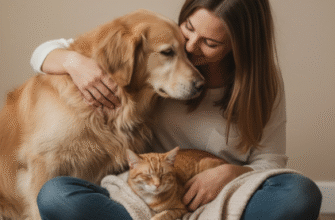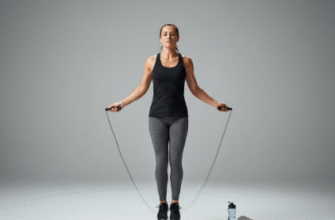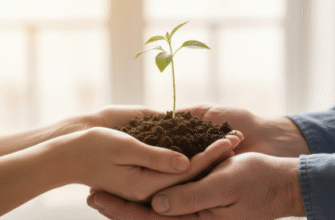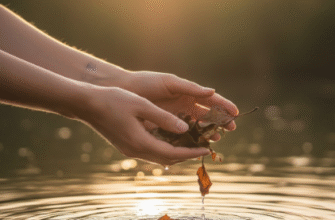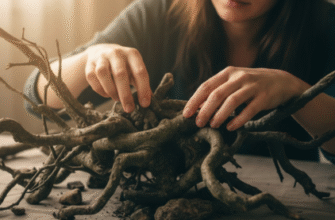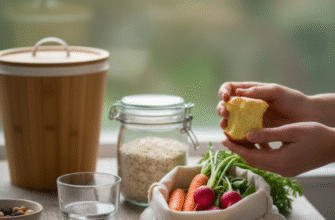It happens so easily, doesn’t it? You finally carve out some time for your beloved hobby – maybe it’s knitting, maybe painting, perhaps tending to your garden or meticulously assembling a model kit. You’re looking forward to relaxing, unwinding, creating something. But then, the mind wanders. You start thinking about work deadlines, what’s for dinner, that awkward conversation from yesterday. Or maybe you’re scrolling social media on your phone with one hand while trying to paint with the other. Before you know it, the time is gone, and instead of feeling refreshed, you feel… well, maybe a little frazzled, like you didn’t fully *connect* with the activity you supposedly enjoy.
This is where the idea of mindful engagement comes into play. It’s about shifting from simply *doing* your hobby to truly *being with* it. It’s not about adding another complicated layer or striving for some spiritual enlightenment while you’re trying to get your stitches right. Rather, it’s about bringing a gentle, focused awareness to the process itself, moment by moment. It’s about noticing the sensations, the materials, your own movements, without the usual overlay of judgment or mental chatter.
What Does Mindful Crafting Actually Look Like?
Think about the difference between gulping down a meal while watching TV versus savoring each bite, noticing the textures, flavors, and aromas. Mindful engagement with hobbies is similar. Instead of rushing towards the finished product or multitasking your way through your creative time, you intentionally slow down and pay attention to the journey.
It means feeling the smooth glide of the paintbrush across the canvas, noticing the subtle variations in color as they blend. It means paying attention to the rhythmic click of knitting needles, the specific texture of the yarn running through your fingers – is it soft merino, rustic wool, smooth cotton? If you’re woodworking, it’s about noticing the scent of the sawdust, the grain pattern under your touch, the satisfying resistance as the chisel shaves away a curl of wood. If you’re baking, it’s the feel of the dough becoming elastic under your hands, the warmth radiating from the oven, the sweet smell filling the kitchen.
Crucially, mindfulness here isn’t about emptying your mind – that’s a common misconception. Thoughts will inevitably arise. You’ll remember you need to buy milk, or you’ll critique your own work. The mindful approach is simply to notice these thoughts without getting swept away by them. Acknowledge them gently, like clouds passing in the sky, and then gently redirect your attention back to the physical sensations and actions of your craft. There’s no need for frustration when the mind wanders; it’s perfectly natural. The practice is in the returning, again and again, to the present moment of creation.
Why Bring Mindfulness to Your Creative Time?
You might wonder, isn’t the point of a hobby just to relax and have fun? Why add this ‘mindfulness’ thing? Well, engaging mindfully can actually deepen the relaxation and enjoyment you get from your activities. When you’re fully present, you escape the mental loop of worries and to-do lists, giving your brain a genuine break. This can lead to a profound sense of calm and restoration that multitasking or distracted crafting simply can’t provide.
Here are some specific benefits you might notice:
- Deeper Enjoyment: By focusing on the process, you appreciate the small details and sensory experiences you might otherwise miss. This enriches the entire activity, making it more satisfying.
- Reduced Stress: The focused attention required acts as a form of gentle meditation, calming the nervous system. The repetitive, rhythmic motions found in many crafts (like knitting, sanding, or even weeding) can be particularly soothing when done mindfully.
- Improved Focus: Regularly practicing mindful engagement can strengthen your ability to concentrate, which can carry over into other areas of your life.
- Enhanced Creativity: When you’re fully present, you’re more attuned to the materials and the process. This can lead to unexpected creative insights and solutions you might not have stumbled upon if your mind were elsewhere. You become more responsive to the work as it unfolds.
- Greater Connection: You develop a deeper appreciation for your tools, your materials, and the skills you’re honing. There’s a sense of connection to the physical act of making that can be incredibly grounding.
- Acceptance of Imperfection: Mindfulness encourages a non-judgmental attitude. This helps in accepting mistakes or “happy accidents” as part of the creative process, reducing frustration and perfectionism.
Practical Steps Towards Mindful Hobbying
Integrating mindfulness doesn’t require drastic changes. It’s about small shifts in awareness and intention. Here are some ways to get started:
Set the Stage
Try to designate a specific time and, if possible, a relatively calm space for your hobby. This doesn’t mean you need a fancy studio – a quiet corner clear of distractions can work wonders. Before you begin, take a few conscious breaths. Set an intention not just to *do* the activity, but to be *present* with it. Put your phone on silent or, better yet, leave it in another room. Even 15-20 minutes of dedicated, mindful practice can be more rewarding than an hour of distracted dabbling.
Engage Your Senses
This is the core of the practice. Intentionally tune into the sensory details of your craft:
- Touch: Feel the texture of the fabric, the coolness of clay, the weight of your tools, the warmth of the wood. Notice the pressure of your hands.
- Sight: Observe the colors, shapes, and forms. Notice how light interacts with your materials. Watch your hands as they work.
- Sound: Listen to the snip of scissors, the whir of a sewing machine, the scrape of a tool, the rustle of leaves if you’re gardening. Even silence has a quality to notice.
- Smell: Inhale the scent of paint, wood, soil, baking ingredients, glue, or wax.
- Proprioception: Notice the physical sensations in your body as you work – the posture you hold, the movement of your arms, the tension or relaxation in your shoulders.
Notice Your Thoughts and Feelings
As mentioned, thoughts will pop up. Just notice them. Are you planning, worrying, judging? Acknowledge the thought (“Ah, thinking about dinner”) and gently guide your focus back to the sensory experience of your craft. Similarly, notice any feelings that arise – frustration, satisfaction, boredom, joy. Observe them without judgment, as temporary states passing through.
Embrace the Process, Not Just the Outcome
Let go of the intense focus on the finished product. While having a goal is fine, try to find joy and interest in each step along the way. Appreciate the learning, the experimentation, even the mistakes. The beauty lies in the act of creation itself. If you find yourself rushing, consciously slow down your movements.
Be gentle with yourself in this practice. Mindfulness isn’t another task to achieve perfectly. Some days you’ll feel more present than others, and that’s completely okay. Avoid turning mindfulness into a source of self-criticism; the aim is gentle awareness, not rigid control. Just noticing you’ve been distracted *is* a moment of mindfulness.
Single-Tasking is Key
Resist the urge to combine your hobby time with watching TV, listening to complex podcasts, or engaging in conversations that demand your full attention. While background music might be okay for some, the real depth comes from giving your chosen craft your undivided focus. Experience the richness of doing just one thing at a time.
Take Mindful Pauses
Every now and then, pause deliberately. Put down your tools, take a conscious breath, and simply observe your work, your space, and how you feel. These brief check-ins can help reset your focus and bring you back to the present moment if your mind has drifted far away.
Mindfulness Across Different Crafts
The principles are universal, but here’s how they might look in practice:
- Knitting/Crochet: Focus on the loop of yarn over the needle, the feel of the stitch forming, the growing weight of the fabric in your lap, the color patterns emerging.
- Painting/Drawing: Notice the drag of the brush or pencil, the way colors mix, the texture of the paper or canvas, the subtle shifts in light and shadow you’re trying to capture.
- Gardening: Feel the earth in your hands, smell the damp soil, notice the delicate structure of a seedling, listen to the birdsong, observe the tiny insects.
- Woodworking/Carving: Pay attention to the grain of the wood, the sound and feel of the saw or chisel cutting, the changing shape under your hands, the smell of the sawdust.
- Baking/Cooking: Focus on the textures of ingredients, the sounds of chopping or mixing, the aromas filling the kitchen, the warmth from the stove or oven.
- Model Building/Miniatures: Observe the tiny details, the precise movements required, the feel of the small parts, the gradual assembly taking shape.
Ultimately, engaging mindfully with your hobbies transforms them from mere time-fillers or goal-oriented tasks into rich, restorative experiences. It’s an invitation to slow down, appreciate the simple act of creating, and connect more deeply with yourself and the world around you through the activities you love. It brings the focus back to the *doing* and the *being*, allowing the end result to be a natural outcome of a fully inhabited process, rather than the sole purpose of the endeavor. Give it a try – you might find a whole new layer of satisfaction waiting in your favorite pastime.

